In cities throughout the United States, thousands of people are gearing up for another busy summer of growing vegetables in community gardens and caring for street trees planted along the sidewalk’s edge. Self-organized, volunteer-based, and focused on improving both communities and the environment, these “civic ecology” practices often pick up where municipal governments and larger non-profits leave off. Marianne Krasny and Keith Tidball, founders of the Civic Ecology Lab at Cornell University, have done important work summarizing and describing the different reasons why volunteers engage in these practices. They’ve also noted the wide range of benefits that likely result from activities like gardening and tree care; benefits that can accrue to individuals, neighborhoods, and, perhaps, even whole cities.
This blog post explores some issues around the political economy of civic ecology practices before moving on to consider three attitudes that may help make these practices more successful. I’ve chosen to focus on community gardens and street tree stewardship because they are the practices I know best, through both personal experience and academic research.
In both good times and bad, volunteers are essential to the tasks of creating and maintaining green spaces in North American cities. In a robust economy, city governments can afford to support volunteers with training programs, technical assistance, and warehouses full of tools and materials. During lean times, governments cut spending on these initiatives and volunteers find themselves managing an ever-widening portfolio of projects with little help from on high. In both circumstances, volunteers take on tasks that might once have been handled by municipal employees earning living wages and pensions. Some argue that shifting the burden of environmental maintenance on to volunteers in urban communities is an unjust abdication of government responsibility for the common good. Others make the case that volunteers derive benefits from doing the work that may outweigh the costs.
Good or bad, it seems that affluent neighborhoods can more easily afford to pick up the government slack, writing checks for private environmental maintenance services when public funds run dry. In cities, special Business Improvement Districts levy supplemental taxes to pay for things like street sweeping, plaza maintenance, tree care, and ornamental landscaping. Public parks have their own version of this scheme, with independent Conservancies and “Friends of…” organizations raising large sums from wealthy donors who benefit heavily from having a well-kempt park in their own back yard. This arrangement works nicely in pockets of the city with ample money to donate. It falls short in other neighborhoods with too few businesses to finance an Improvement District and even fewer deep-pocketed donors to bankroll the upkeep of a local park.
I don’t mean to denigrate the good work that both Business Improvement Districts and Parks Conservancies have done to make large patches of cities in the U.S. safer, more inviting, and more environmentally enlightened. Looking back over the past thirty years we see some of the most ambitious and extravagant versions of these strategies at work in New York City. Celebrated public spaces like Central Park, Times Square, and The High Line would look radically different without the private money that pays for their ongoing maintenance and improvement. Though there is plenty of nostalgia for that bygone gritty New York, it’s difficult to imagine anyone would elect to change a place like Bryant Park back into an open market for shady drug deals. I doubt anyone wishes Prospect Park Alliance would close up shop and leave its Olmstead-designed namesake to fall back into disrepair.
That said, not every neighborhood in New York City—or in any other city, for that matter—is able to pick itself up by its bootstraps with the leavening help of local cash. In many cases, parks far away from the center of town remain unkempt and underwhelming. Street trees die soon after they’re planted for lack of regular care. Community gardens struggle to find new members to take over the work of older generations. Neighborhoods that have overcome these odds have done so by pitching their own volunteer labor into ongoing maintenance and, at times, by organizing to demand more capital investments in parks, trees, and gardens from city hall. Those that can’t muster volunteers or political clout are often left to do without.
Clearly, I’m ambivalent.
In the best of all possible worlds, city dwellers would share equitably—if not equally—in both the benefits and the burdens of urban life. In reality, some neighborhoods pay for supplemental services while others are forced to turn to volunteers to fill in the gaps. For most readers of this blog, none of this is news. In New York City, the first modern community garden and the first organized street tree stewardship initiative were set up roughly forty years ago during a prolonged period of decline in municipal fortunes. We’ve all had time to learn to live with the contradictions inherent in the neo-liberal city. We may not like this arrangement, but most of us work within it anyway.
For many of us directly engaged in a civic ecology practice (I count myself as an erstwhile community gardener and sometime street tree steward), the issue isn’t whether or not to do the work. We just take for granted that it needs to get done. Rather, our burning question is how to do the work so that it actually has a positive impact on our communities and the local environment. We find no shortage of solid information out there on best practices in gardening, tree care, or any other kind of horticultural practice you can think of. We attend master gardener training programs and adult continuing education classes at botanic gardens; we scour our local libraries and log hours on cooperative extension websites from Land Grant colleges throughout the country. It is relatively easy to find places ready to teach us the skills and conceptual knowledge necessary for doing this work.
But what about the attitudes that make civic ecology practices in cities successful? Jane Vella, a leading figure in informal adult learning, likes to say, “Attitudes are caught, not taught.” You can describe an idea and demonstrate how to use a tool, but people develop their own outlook on an issue in their own time. What, then, are some attitudes we might hope to see develop in and around civic ecology practices that happen in cities?
I have my own personal perspective on the values that matter most in successfully caring for a community garden or a row of street trees. The following three themes keep popping up in my own practices. I should stress, however, that none of these thoughts or observations are based on sustained, empirical research. Take it or leave it, these are just opinions I’ve formed over years of working alongside other gardeners and tree stewards around New York City, talking and reflecting on our efforts together.
Take a cue from street art and embrace the city
In the United States, cities have long been seen as a necessary evil of a capitalist economy—denigrated, tolerated, and rarely celebrated. Writing at the turn of a century that gave the world its first industrial megacities, Thomas Jefferson had this to say: “I view great cities as pestilential to the morals, the health, and the liberties of man.” His was by no means the last word on the subject. A hundred years later, urban planners and political reformers set themselves to the task of making American cities a little less, well, urban, paving the way for high-rise housing projects and metastasizing suburban sprawl. The modern environmental movement has roots in this tradition, with an anti-urban streak that has only recently been brought into question by increasingly subtle ways of looking at the relationship between cities and nature (an exciting theme that runs through many of the essays written for The Nature of Cities blog).
I think community gardening and street tree stewardship practices are strengthened when they work past these longstanding biases and wholeheartedly embrace the contemporary city. Though we often use terms like “urban farming” and “urban forestry” to categorize these practices, we shouldn’t let our rural analogies run ahead of reality. Community gardens are like farms—but, then again, they’re really not. They have uniquely urban commitments that run far beyond the garden gate and into the heart of the neighborhood. A street graced with a dense tree canopy is like a forest in some ways, and the analogy has helped many people make an emotional connection to what otherwise may feel like a scattered jumble of individual trees. Yet street trees are just one of many ingredients in a subtle recipe for designing safe and vibrant sidewalks. Despite their rural corollaries, these practices are wholly urban, and they reach their greatest potential when they work with the city rather than against it. When we use trees and gardens to solve urban problems, we need to remember that the solutions to those problems will almost always involve better urbanism—not less urbanism.
To that end, I think both gardeners and farmers can draw inspiration from street art, a creative practice that takes artwork out of its native habitat and stitches it directly into the city.
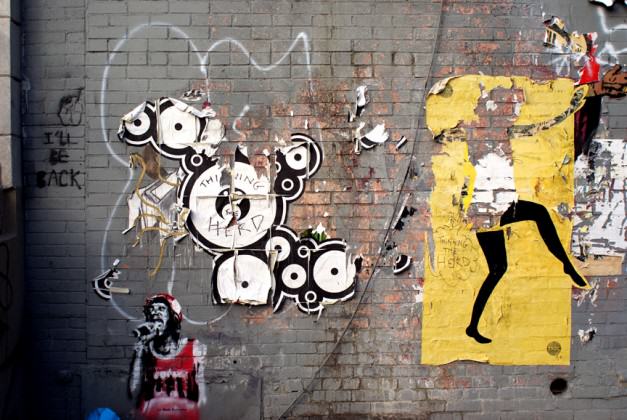
Street art takes a number of different forms, from wheat paste posters and stenciled spray paint to chalk murals and multi-media installations. Sometimes it is earnest and political. Sometimes it is ironic and playful. It often incorporates elements of the physical city, transforming urban infrastructure into canvas, medium, gallery, and artwork all at once. Street art is rough around the edges, comfortable in messy environments, and relaxed in its ephemerality. You don’t get lost in street art; it doesn’t try to transport you away from the city. Instead, it roots you even more firmly in the radical uniqueness of a particular urban place.

When I hear community gardens described as “oases” of nature in the city, I can’t help but cringe a little. Some of the most resilient, interesting, and exciting gardens I’ve come across in New York are the ones that happily submit to their urban surroundings. At Espiritu Tierra garden in the Williamsburg section of Brooklyn, plastic bodega bags serve as scarecrows and two colorful murals tell the story of the neighborhood’s struggles and victories over the years. In the East Village neighborhood of Manhattan, residents fashion street tree guards out of old refrigerator shelves, air conditioner grills, and chicken wire, decorating their bricolage with a mosaic of broken ceramic and tile.
These do-it-yourself approaches to gardening and tree care may not look like something out of the L.L. Bean catalogue, but they get the job done. Though the results may not be beautiful in the conventional sense, they’re almost always meaningful. They have that scrappy quality you see in layers of decomposing street art, reincorporating bits and pieces of the city’s flotsam to create something that surprises the eye and captures the imagination.
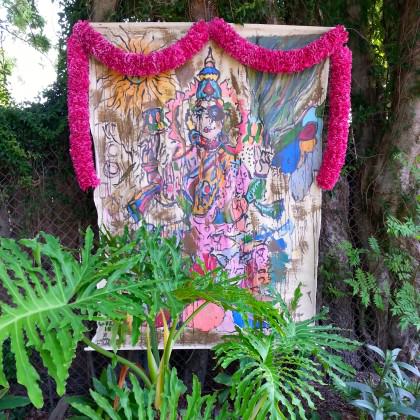
I believe the Guerilla Gardening movement, which got started in London and spread throughout the world in recent years, points us in an exciting direction. Quirky, resourceful, and even sometimes confrontational, Guerilla Gardening weaves a patchwork of greenery into unlikely places throughout the city. It doesn’t try to transport you to another place. Instead, it invites you to discover and, perhaps, create a new found love for the place you find yourself in right now.
What might happen if gardeners and tree stewards adopted these attitudes toward their work? How would their practices change? What would be the long-term result? My hope is that a street art approach to both practices would help make urban gardening and forestry more approachable and engaging for a greater diversity of people—especially those of us who deeply love city life.
If any readers have examples of these attitudes already in action, I eagerly welcome them to share their stories in the comments section below.
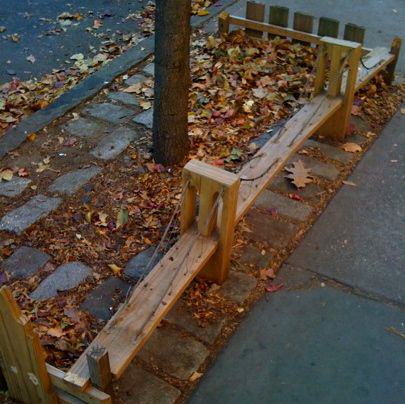
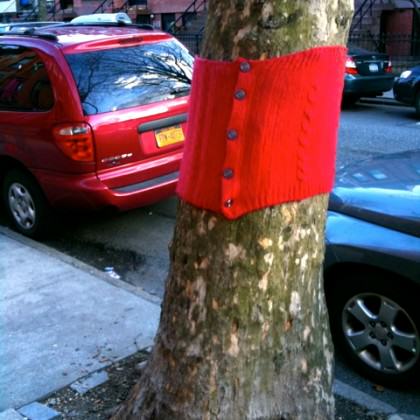
Take it slow and work for the long haul.
For anyone involved in an environmental management practice, it often feels as if time is running out. Temperatures are rising, glaciers are melting, forests are shrinking, and species are disappearing. Sometimes it seems as if the urgency with which we work to delay, pause, or reverse these trends is, in itself, unsustainable. At best, we burn ourselves out and force ourselves to take a break for a little while. At worst, we recapitulate the shortsightedness and callousness that got us into many of these messes in the first place. Though we find ourselves in a growing heap of environmental crises, we can’t let the pace of our responses overwhelm us.
“Garden,” my friend John likes to say, “is a noun and a verb.” John and I belonged to the same community garden in Brooklyn, and I was always inspired by the slow, thoughtful approach he took to the tempest-in-a-teapot politics that would occasionally stymie everyone’s efforts to work together. The more excited everyone grew in a debate over cutting down a tree or creating a new vegetable bed, the calmer and quieter John became. And then he’d remind us, in a low voice—garden is a noun and a verb. On any given day, the garden might look like a solid and predictable presence in the neighborhood. Yet it was always changing, sometimes slowly and imperceptibly and other times in quick and disruptive bursts.
Creating and caring for gardens, stewarding street trees, maintaining parks, restoring urban waterways—all of these practices are what Myles Horton might have called “long haul” work. They’re never really done, and any effort to rush toward a feeling of completion usually ends in frustration and failure. Instead, these ongoing practices ask for an attitude that combines patience and faith in processes that take their own time, no matter how long that time may be.
In recent years, some cities have sprinted to quickly plant millions of new trees on sidewalks and in public parks. Efforts to organize and mobilize volunteers to care for these trees have struggled to keep pace with the swift planting schedule and thousands of new trees have likely died for lack of adequate stewardship. I’ve heard some residents complain that “the city” foisted new trees on them without consultation. As a result, these citizens bear little responsibility for the long-term survival of these new additions to the urban forest.
Contrast this quick-hit urban forestry strategy to the efforts of the New Jersey Tree Foundation, where staff organizers work closely with residents of neighborhoods in cities like Newark and Camden to prioritize and design new tree planting projects. In order to get trees from the Foundation, neighbors must come together to select new planting sites, secure stewardship commitments from local residents, and host a block party on the day the trees are planted. Slowly and deliberately, the Foundation and its neighborhood partners build excitement and investment in the new trees. As a result, one Foundation staff person I’ve spoken to estimates that 95 percent of the trees they’ve planted have survived well past their first year near the curb. They may not plant thousands (or even hundreds) of trees at a time, but they’re working for the long haul. Time will tell which strategy has a more lasting impact as the years go by.
Facts all come with points of view
In recent years, environmentalists of all stripes have put a lot of effort into quantifying and monetizing the value of things like gardens and parks, street trees and greenways. The theory behind these efforts is straightforward. In a society that measures costs and benefits in monetary terms, anything that lacks a price tag is, effectively, counted as worthless. Drawing on the concept of ecosystem services, advocates have crafted rigorous methods for calculating the dollars and cents worth of benefits these things create in order to make their value literally count.
Take the case of urban forests. Trees soak up carbon dioxide. They trap storm water and prevent it from polluting urban waterways. They save electricity by shading buildings and reducing the need for air conditioning. You can assign a dollar value to each of these benefits and tally it all up like savings in your bank account.
In fact, there’s an app for that, courtesy of the U.S. Forest Service.
Yet throughout history, people have made compelling cases for creating and taking care of urban greenery without relying on sophisticated accounting tools to boil it all down to money. I’ve spoken to a number of community gardeners who are reluctant to estimate the monetary value of their work because they feel some values just can’t be quantified. Farming Concrete, a citizen science initiative developed and tested in New York City, offers gardeners a rigorous toolkit for weighing, tracking, and estimating the market value of the vegetables they grow together each season. For some gardeners, seeing that dollar amount at the end of the summer is an epiphany. It shows that their work really does add up in a tangible way. Yet the people who created Farming Concrete never meant for that one metric to become the only means by which we value community gardens.
What if a garden has a bad harvest one year? Does that mean we should value it less than in previous years? What about the intangible benefits that come out of community gardens? How do we calculate the value of a well-organized and politically engaged group of neighbors? How about the value of an informal public space that lets people come together without having to pay to get in? Even if we develop clever proxy measures to quantify these hard-to-grasp concepts, there’s a pervasive sense that the whole will always be greater than the sum of its parts. Tally up all the ways gardens or trees have an impact on the city and you’re still left with an incomplete balance sheet.
This “something special” that exists beyond the explanatory power of numbers is, I think, best captured in stories about the impacts of gardens and trees in cities. Policymakers may ask for “just the facts” about the costs and benefits of caring for a city’s living systems. But as David Byrne once cautioned in the lyrics of a popular song, “facts all come with points of view / facts don’t do what you want them to.” Sometimes numbers, presented all on their own, really can’t tell the whole truth.
Stories, on the other hand, needn’t be completely factual to be accurate. They don’t rely on an exhaustive account of every quantifiable benefit created by a garden, a park, or a tree to render a resonant argument about the value these things bring to the city. Stories can start from the assumption that these things are priceless, not worthless. Moreover, storytelling is a skill available to everyone. Gardeners and street tree stewards shouldn’t have to wait for a technical expert to measure the value of their work.
As part of the Five Borough Farm initiative sponsored by the Design Trust for Public Space, my colleague Liz Barry and I are developing a toolkit that helps New Yorkers tell accurate stories about all the good things happening in their gardens. Though the tools and methods we’re developing focus on collecting quantitative data, this is just a first step in the storytelling process. Instead of simply generating a spreadsheet of raw facts and figures, we hope gardeners will use the data to tell rich, complex, and compelling stories about the value of their work. Though the data they collect may never completely capture all of the good that comes out of gardens, the stories they go on to tell will more than make up the difference.
* * *
These three attitudes—embracing the city, going slow, and valuing stories—are by no means the only attitudes with the potential to strengthen civic ecology practices like community gardening and street tree stewardship. What other attitudes might we add to the list? What new or unexplored perspectives can we consider as we look to volunteers to make cities more environmentally resilient? I hope you’ll add your thoughts in the comments section below and kick-start a new conversation.
Philip Silva
New York

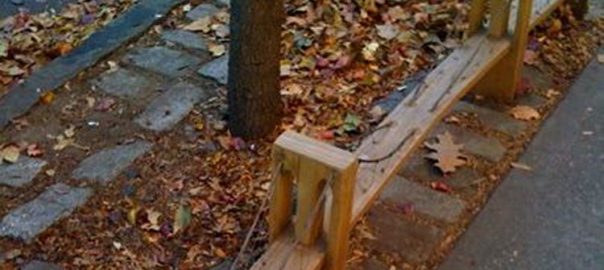






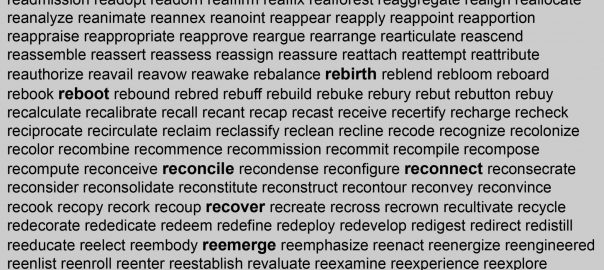
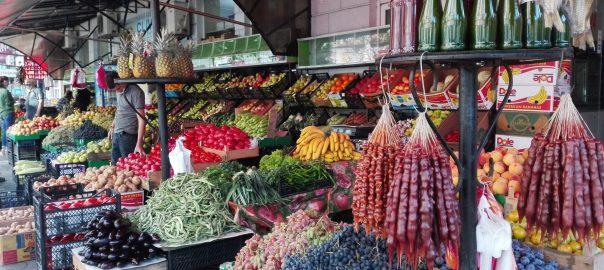

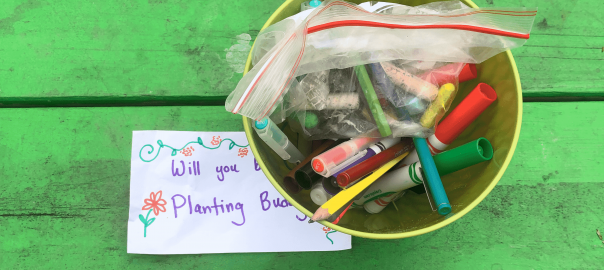
You may find some historic value in :
http://blog.tepapa.govt.nz/2012/11/02/vacant-lot-of-cabbages-documentation-enters-te-papas-archives/
http://www.art-newzealand.com/Issues1to40/exhibitions10wnnr.htm
http://books.google.co.nz/books?id=bWhH1fjliCwC&pg=PA123&lpg=PA123&dq=vacant+lot+of+cabbages+wellington+a+city+for+sculpture&source=bl&ots=qWd7U2dit7&sig=vbFYe1p3neuwt6j6vU1pWhZZXqk&hl=en&sa=X&ei=qDnQU_WGIpGdugTwhoGQDg&ved=0CDwQ6AEwBA#v=onepage&q=vacant%20lot%20of%20cabbages%20wellington%20a%20city%20for%20sculpture&f=false
http://muir.massey.ac.nz/handle/10179/3041
http://bat-bean-beam.blogspot.co.nz/2011/10/occupy-wellington.html
http://bowalleyroad.blogspot.co.nz/2010/08/riders-of-storm.html
http://www.stuff.co.nz/dominion-post/news/8127145/Te-Papa-buys-cabbage-art-show-mementoes
Phil–I liked your three attitudes, especially the one about embracing the city. And I have two questions.
1. Despite the language that you find problematic (e.g., oasis), I still think people like community gardens — or maybe even “need” community gardens — because the gardens offer some kind of calm, quiet, cool–connection with “nature.” How do you reconcile this with your critiques and notion that these are truly urban spaces?
2. The word “volunteer” seems strange for community gardeners and many other civic ecology stewards. Perhaps the city might think of them that way, but they are not necessarily “volunteering” for something. (Volunteer is a noun and a verb.) To me this would imply that a city office, NGO or other group organized something and folks came out to volunteer. But if a community gets together and decides to take over a vacant lot and convert it to a garden, they are not volunteers. The university students who come out to help them may be volunteers. Thoughts?
Thanks for your contributions! Marianne
Philip, Thanks for this piece and particularly your call for a more nuanced view of the multiple roles that greenspaces play IN the city, not apart from the city. I, too, cringe every time well meaning advocates for urban greenspaces portray their primary role as providing a “respite” or “refuge” FROM the city. Certainly we need those large scenic reservations that John Charles Olmsted described in his 1903 master plan for a comprehensive park system here in Portland, Oregon which do serve as critical refugia for fish and wildlife and for humans as well. But, in the main, urban greenspaces should be viewed as part the urban fabric not an escape from it. And to do that we do need to change attitudes about the city itself, as you so successfully argue. For too long conservation organizations and natural resource agencies have harbored anti-urban attitudes and have fostered a nature vs city dogma. That must change and I view The Nature of Cities and Biophilic Cities (www.biophiliccities.org) blogs as one way to change that mindset.
Regards
Mike Houck,
Urban Greenspaces Institute
http://www.urbangreenspaces.org
and The Intertwine Alliance
http://www.theintertwine.org
Audubon Society of Portland
http://www.audubonportland.org
Portland, Oregon